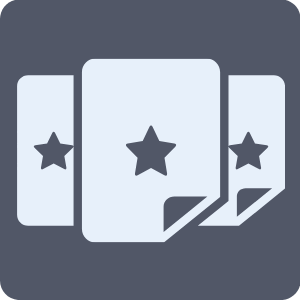[level-non-member]
Members, remember to log in to view this post.
[/level-non-member]
[level-membersupporter]
BY KEVIN RHOADES
This article is the second installment of a three-part series about e-books. The first article, “Make money on the e-book gravy train,” appeared in the December 2011 issue of Outdoors Unlimited. In part three, the author will talk about creating an online presence for your e-book.
If you’re thinking about jumping on the e-book gravy train to earn extra dollars from previously published print books, the following should shed light on popular e-book file formats and commonly-used digital book readers — and what to do with the files once created. A quick Google search reveals more than 50 e-book file formats, but those most commonly used by the plethora of reading devices include PDF, mobi and epub. All that is necessary to read a PDF is a computer and PDF-reading software such as Adobe Acrobat or Foxit Reader, then you’re off and reading a PDF-version of “A Chukar’s Hunting Companion” or “Billy Barnstorm – The Birch Lake Bomber.” Mobi and epub, however, are better suited for devices that offer users a dynamic reading experience, e-readers such as Barnes & Noble’s Nook, Apple’s iPad or Amazon’s Kindle.
Most of us are familiar with the old-standby PDF, the Portable Document Format created by Adobe Systems, which is the de facto standard for outdoor communicators exchanging manuscripts and photos throughout cyberspace. Although it’s a snap to create a PDF from your print book and call it an e-book, and try to sell it from your website, the PDF as an e-book can provide an annoying experience for seasoned Nook, iPad and Kindle users because these devices allow users to alter font size and styles and adjust line spacing. Since text automatically reflows in e-readers, there is no need for page numbers, headers, footers or margins as found in PDF books created from print books without e-reader customization.
Book-layout applications InDesign and QuarkXPress can export print books to epub files, but re-design is necessary to optimize the e-book experience. The epub is used by Nook and Apple devices whereas a mobi file is preferred for Kindle.
There are layout considerations for converting print books to their electronic cousins. “Front matter” found in print books — the dedication, acknowledgements, and copyright page — are often placed at the rear of an e-book. We typically start an e-book with a cover photo, then an author-title page followed by a table of contents with each heading hyperlinked to its respective chapter. We include lead-off chapter illustrations or photos. However, illustrations or photos other than lead-off are typically deleted when designing an e-book, unless the illustration, art or photo directly helps the reader understand what is being read. With e-books, much consideration is given to minimizing file size while maximizing the reading experience. Bottom line: text is king since your book might be read on devices as small as smartphones with screens that measure only a few inches wide.
E-books should have an International Standard Book Number unless you plan to sell your book only from your website. Although the Kindle does not require an ISBN, we recommend one because the ISBN is sort of like a Social Security Number for your book; your ISBN is unique for your book and identifies yours among millions. Bowker, issuer of ISBNs, requires e-books to have different ISBNs than their print counterparts, even if the content is identical. Rule: Different format, different ISBN.
After you have successfully created and tested your e-book files with software provided by giant online retailers, the next step is to create an electronic billboard via Author Central on Amazon, for example, so the world can read about you and your book. Prospective buyers can preview a chapter before deciding to click the “BUY” button.
Next time I’ll cover creating an online presence with these online bookseller giants — Kindle Direct Publishing, Barnes & Noble PubIt and Apple’s iBookstore. ♦
—Kevin Rhoades, www.KevinRhoades.com, specializes in book layout, newsletter design and websites for outdoor communicators. His first book, “Stalker of the Wild – Days in the Life of Wildlife Filmmaker Bob Landis,” won a first place award in the biography category of Dan Poynter’s 2011 Global eBook Award.
[/level-membersupporter]
E-books can be much more than a PDF file

